Tiger Corporation Starts to Serve Original Dishes to Reduce Food Loss Such as Szechuan-style Spicy Noodles Cooked Using Soup Stock Leavings Including Skins and Scraps of Vegetables Left After Cooking at Company Cafeteria!
[October is Food Loss Reduction Month]
Tiger Corporation Starts to Serve Original Dishes to Reduce Food Loss Such as Szechuan-style Spicy Noodles Cooked Using Soup Stock Leavings Including Skins and Scraps of Vegetables Left After Cooking at Company Cafeteria!
The recipes to reduce food loss that can be cooked at home are now available on our website
: Yoshitoshi Kikuchi, Headquarters : Kadoma City, Osaka Prefecture) , a world leader in heat control technology, has opened the Dining Tigris employee cafeteria at its Osaka headquarters as part of its efforts to reduce food loss . We will start offering food loss reduction menus in
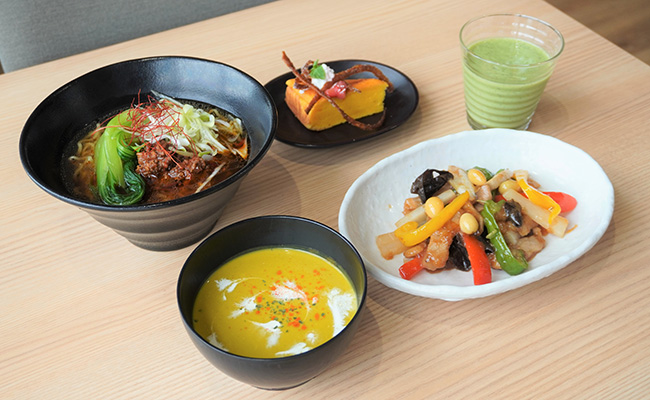
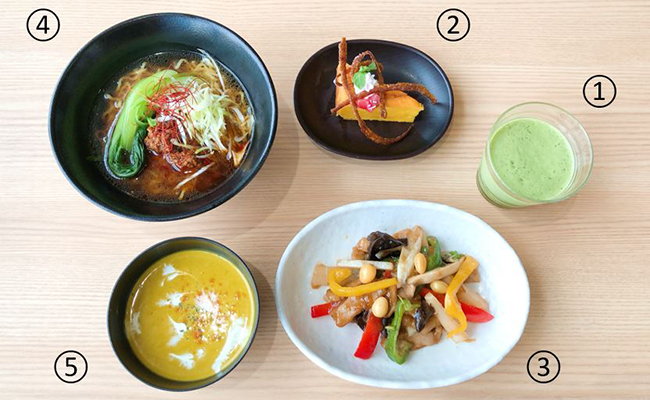
(2) Carrot cheesecake using whole carrot
(3) Stir-fried pork with seasonal vegetables, seasoned with oyster sauce
(4) Szechuan-style spicy noodles with soup stock leavings
(5) Pumpkin soup made from whole pumpkin including its seeds
The annual total food loss in Japan reached 5.22 million tons in 2020 as the social background. This means that approx. 113 g of food, which is equivalent to the amount of a bowl of rice, is lost per person per day in the country. This amount is equal to approx. 41 kg a year, which means that the amount of food close to the annual consumption of rice per person (approx. 53 kg) is discarded(*1).
Under the vision of striving to spread joyous harmony throughout the world, Tiger Corporation will serve dishes to reduce food loss at the company cafeteria in Osaka Headquarters in a limited period in October, which is the Food Loss Reduction Month set up by the Consumer Affairs Agency, to face the problem as a company being a part in the food-related industry(*2). In this measure, the company will raise the employees’ awareness of food loss mainly by serving dishes to reduce food loss, with an aim to achieve a food loss reduction target of approx. 1.5 kg in total. The recipes to cook dishes to reduce food loss using the mixers, which will be used actually at the company cafeteria, are now available on our website so that anyone can readily make efforts to reduce food loss at home.
We have also been developing products and making other efforts to achieve SDGs. The electronic jar for keeping warm under a vacuum for commercial use (炊きたて) JHV-A540 released this July eliminates the need to dispose of excess rice after closing a store by keeping the cooked rice under a vacuum for hours to help delay the oxidation of the rice, providing a solution to the food loss problem in the food service industry. As a company that addresses social issues such as human rights, health and the environment, we will continue to make various efforts including the company-wide Zero PET Bottles campaign to reduce PET bottle waste and the activity of recycling used stainless-steel bottles to achieve a circular economy.
*1 Total amount of food loss (estimated in 2020) by the Ministry of Agriculture, Forestry and Fisheries
https://www.maff.go.jp/j/press/shokuhin/recycle/220609.html
*2 Please note that people other than the employees of the company are not allowed to use the company cafeteria.
Overview of the activity to serve dishes to reduce food loss
Tiger Corporation serves dishes to reduce food loss (one to two dishes per week, five dishes in total) at the company cafeteria in its Osaka Headquarters for a period from Thursday, October 6 to Monday, October 31 in the Food Loss Reduction Month.
(1) Thursday, October 6: Green smoothie with kiwi and salad spinach
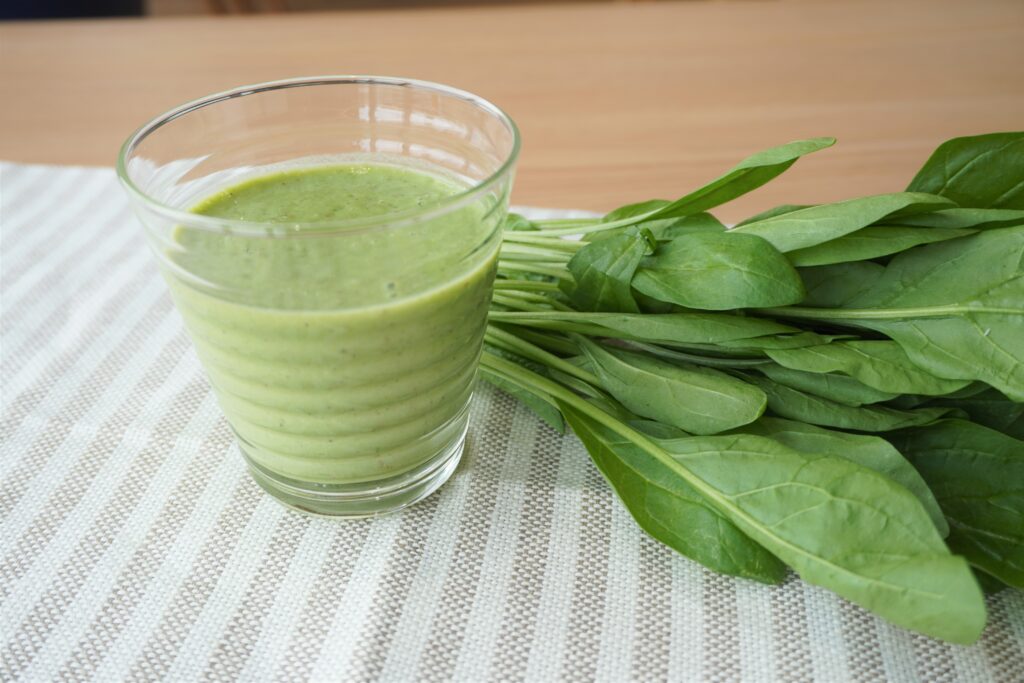
This green smoothie is made with kiwi with its skin. Using kiwi with its skin prevents over-peeling to reduce food loss.
URL of the recipe: https://www.tiger.jp/feature/recipe/post_329.html
(2) Thursday, October 13: Carrot cheesecake using whole carrot
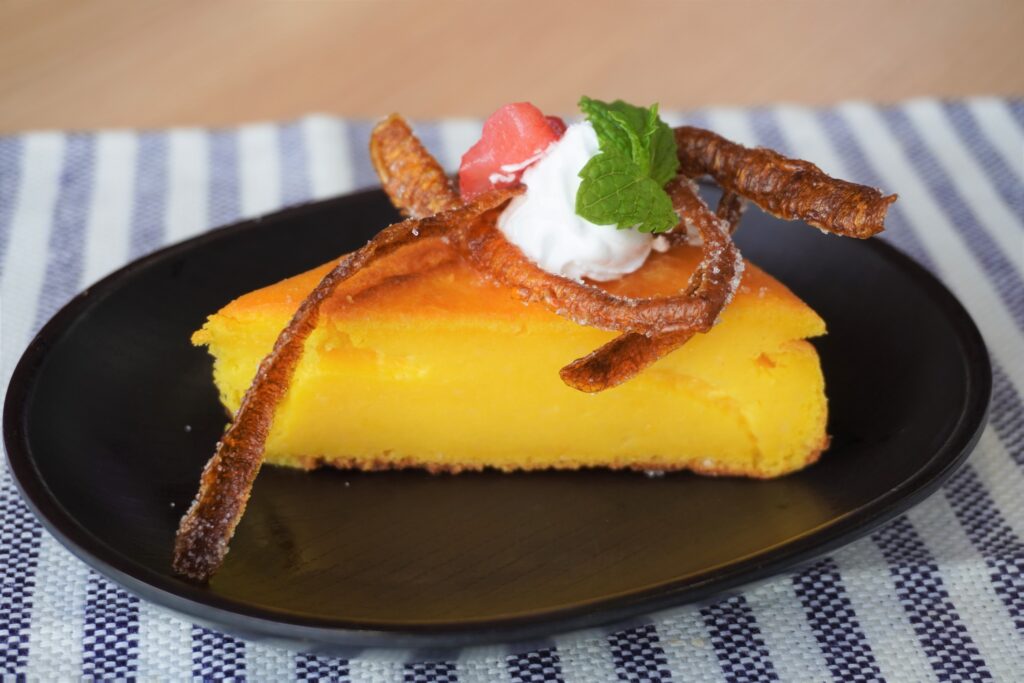
This is a dessert to make with carrot with its skin. Using a mixer for stirring prevents lumps of the carrot skin from being left in the mixture so that the baked cheesecake can be smooth.
You can use pieces of carrot skin left over after cooking another dish as a garnish by deep-frying them and dusting them with granulated sugar.
URL of the recipe: https://www.tiger.jp/feature/recipe/post_264.html
(3) Thursday, October 13: Stir-fried pork with seasonal vegetables, seasoned with oyster sauce
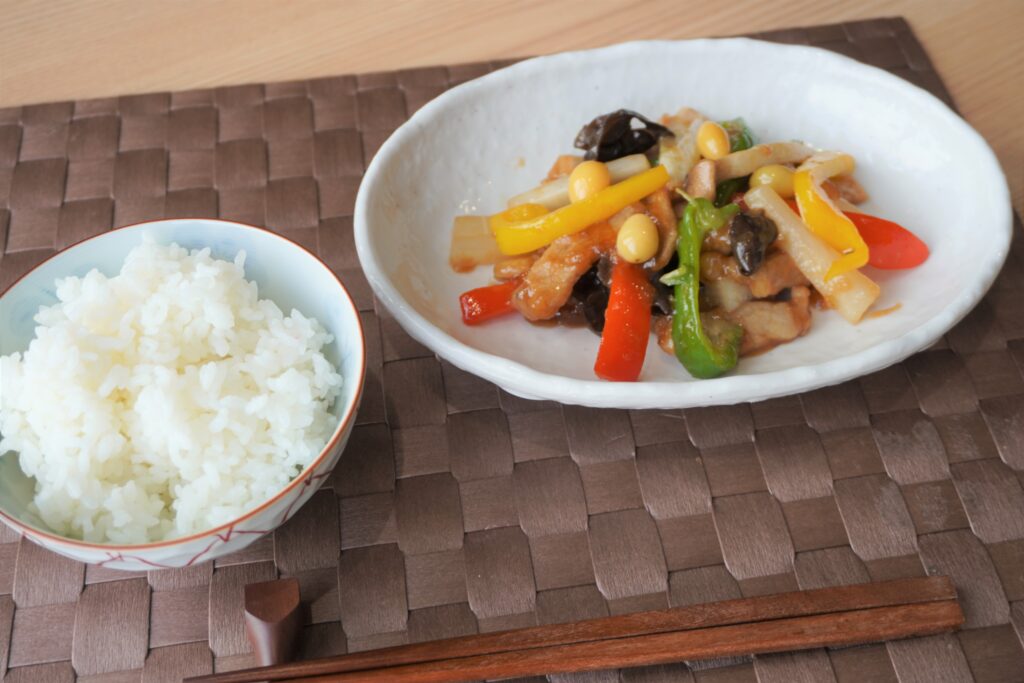
In this recipe, vegetables with their skins, calyces (husks) or seeds such as Japanese radish and green pepper are used. Green pepper with its skin, calyx (husk), and seeds will be easy to eat by cutting it into uniformly sized pieces to cook them uniformly.
(4) Thursday, October 20: Szechuan-style spicy noodles with soup stock leavings
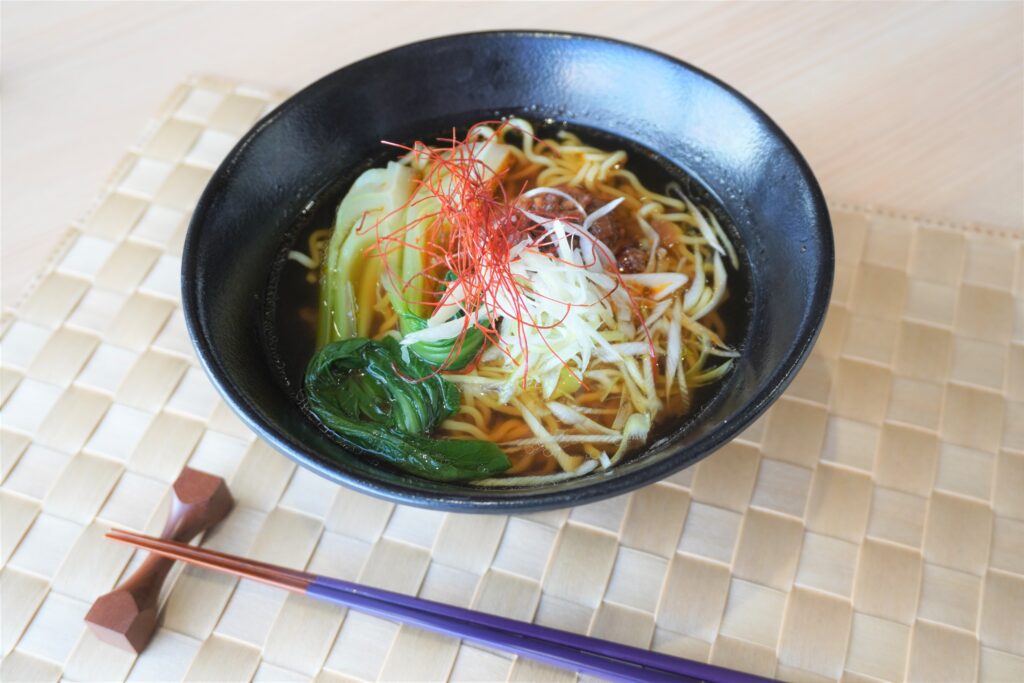
Soup stock leavings (such as dried bonito, kelp, and dried small sardines left after being used to make soup stock) are used for the soup. At the cafeteria, the skins and scraps of the vegetables used to cook other recipes on the day are used in place of powdered soup stock to reduce food loss.
URL of the recipe: https://www.tiger.jp/feature/recipe/post_277.html
(5) Thursday, October 31: Pumpkin soup made from whole pumpkin including its seeds
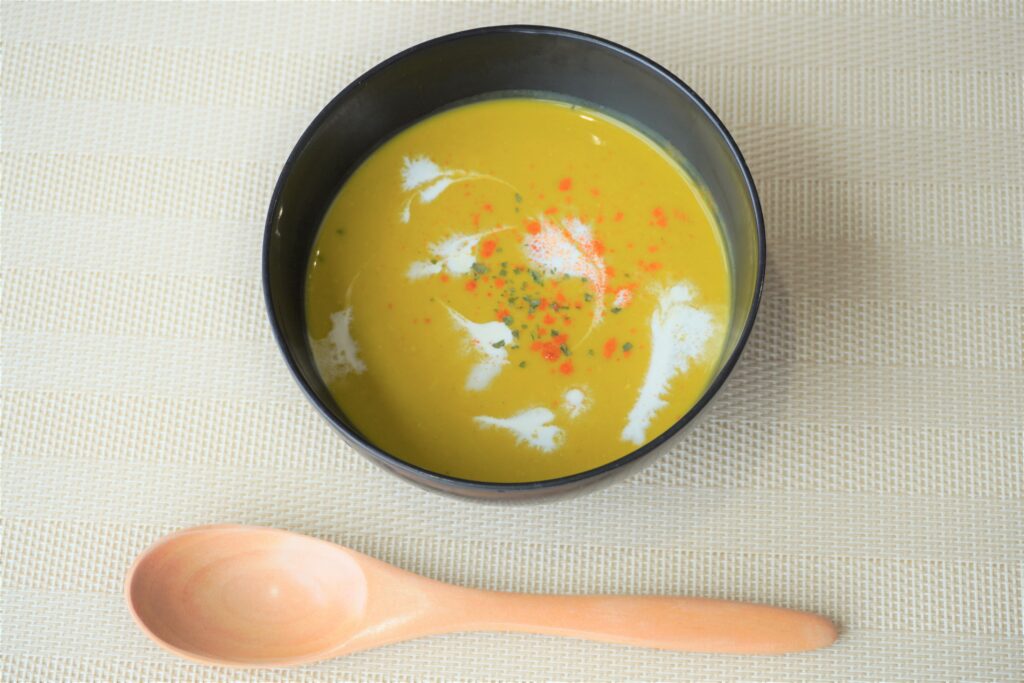
This dish minimizes the amount of waste from a pumpkin by thoroughly crushing the skin and seeds of the pumpkin with a mixer.
URL of the recipe: https://www.tiger.jp/feature/recipe/post_268.html
Tiger products used in the recipes to reduce food loss
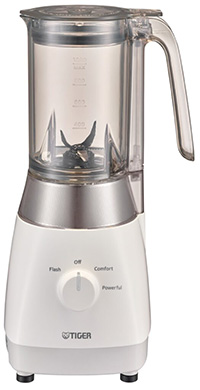
Mixer (TIGER6value+) SKT-G100 Applicable recipes, (2), (4), and (5)
This is the of mixer that allows you to enjoy delicious flavors every day without hassle. With Tiger’s unique “tornado water stream” technique that allows the ingredients to be mixed evenly at the top and bottom in the cup, the mixer can easily crush hard ingredients such as carrots and ice cubes* into fine pieces. This high-power device is capable of crushing hard ingredients such as the seed of an avocado with its black titanium-coated six-blade cutter. A light and strong Tritan (resin) cup is used to make daily use more convenient. The cup and lid are dishwasher- and dish dryer-safe.
*The quantity of ice cubes that can be crushed with this product at a time is four or fewer 2.5 cm ice cubes made in a household freezer
Product page: https://www.tiger-corporation.com/ja/jpn/product/food-prep-appliances/skt-g/
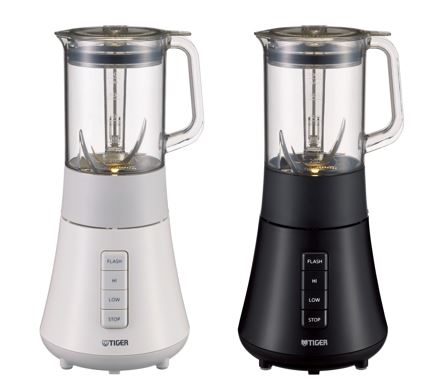
Mixer with mill (TIGER5value+) SKS-R100 Applicable recipes, (4), and (5)
Tiger’s unique “tornado water stream” technique allows leaves or skin to be crushed and mixed adequately so that the ingredients can be blended into a smooth mixture without spoiling the good flavors of the ingredients. The mixer cup and lid are dishwasher- and dish dryer-safe. The light and strong Tritan (resin) cup lessens the burden when pouring the contents and cleaning the cup.
The mixer is provided with the mill and tea mill cups.
Product page: https://www.tiger-corporation.com/ja/jpn/product/food-prep-appliances/sks-r/
Reference | Efforts of Tiger Corporation for SDGs
Electronic jar for keeping warm under a vacuum for commercial use (炊きたて) JHV-A540
In recent years where the food loss problem has been receiving attention, the efforts of companies to reduce commercial food loss/waste generated from food-related operators have been important. Specifically, food loss in the food service industry is caused by the disposal of leftovers from served dishes and excess foods prepared more than necessary.
This product was developed by incorporating the technique to keep rice warm under a vacuum into the electronic jar for keeping warm for commercial use under the 炊きたて brand that has been loved by the users for over 50 years. The electronic container, which uses a vacuum pump, is capable of keeping cooked rice warm under a vacuum continuously for up to about 16 hours. It makes it possible, for example, to cook rice before closing a store and serve it at lunchtime the next day with minimal dryness and yellowing. This product eliminates the need to dispose of excess rice after closing a store by keeping it under a vacuum, providing a solution to food loss in the food service industry.
Product page: https://www.tiger-corporation.com/ja/jpn/product/commercial-use/jhv-a/
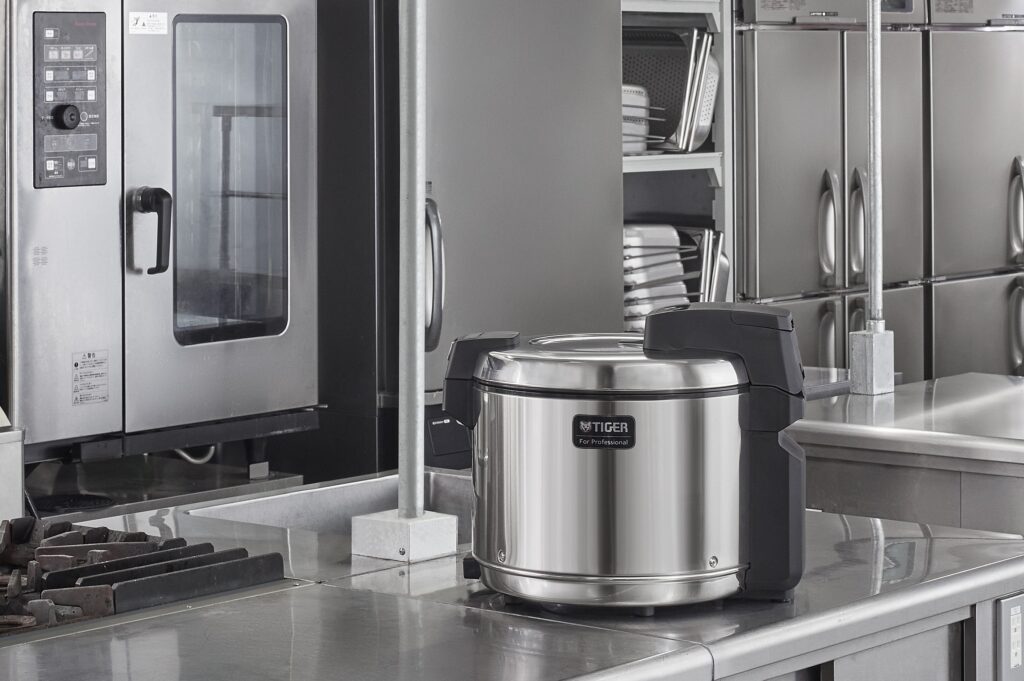
Company-wide Zero PET Bottles campaign
On October 1, 2020, Tiger Corporation started to take the following four actions under the company-wide Zero PET Bottles campaign, as a company that addresses social issues such as human rights, health and the environment.
1.Replacing the vending machines: Replacing the vending machines in the Company with a product lineup that does not sell drinks in PET bottle containers
2. Introducing tea dispensers: Providing water and tea free of charge to customers and employees (they are recommended to use our Vacuum Insulated Bottles as the containers)
3. Banning anyone from bringing PET bottles into the company: Banning anyone from bringing a PET bottle into the premises
4. Water used for cooking rice: Using tap water or distilled water
Reference | Efforts for SDGs related to Tiger’s vacuum insulated bottles
Efforts for circular economy
The stainless-steel bottles no longer needed at home are collected at schools and companies and gathered to a professional recycler. From the gathered raw materials to be recycled, recycled stainless-steel materials and resin products are produced.
We establish a recycling model whereby the recycled stainless-steel materials are used to manufacture new products and delivered to customers again and the recycled resins are used in our production factories. We aim to achieve a circular economy that can reduce environmental load and achieve sustainable economic growth through the recycling of resources instead of consuming and disposing of goods. (Not all the products using the recycled stainless-steel materials are vacuum insulated bottles.)
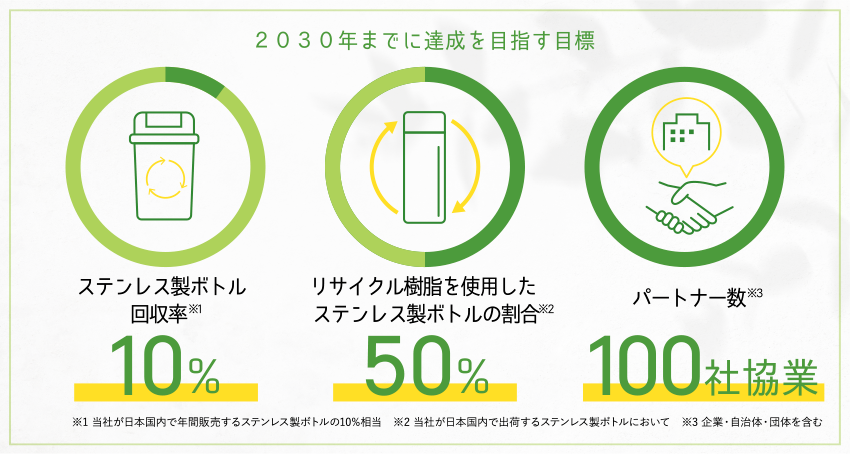
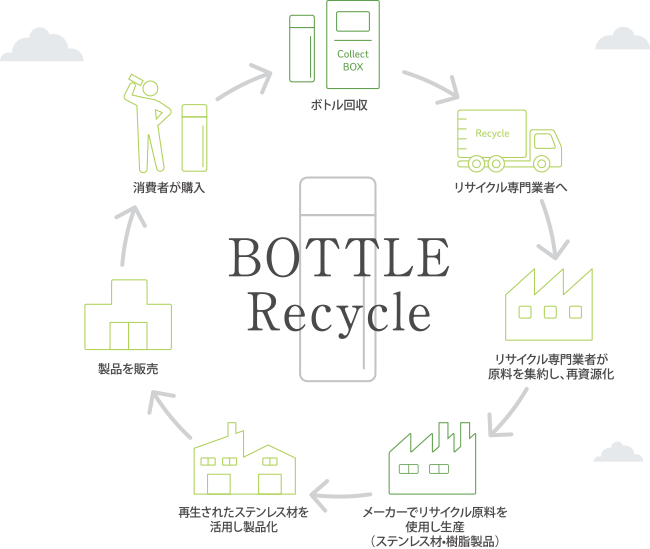
(Spots for collecting used stainless steel) *As of September 2022, in no particular order
- City office and schools in Kameoka City, Kyoto Prefecture*
- Kobe University
- THE THOUSAND KYOTO
- Totoya Kyoto Main Shop
- PAPIER TIGRE
- BOSS E・ZO FUKUOKA (joint effort by Fukuoka SoftBank Hawks and Tiger Corporation) *From October 1, 2022 to the end of February 2023
- 13 stores of AEON and AEON STYLE
- HANDS, 1 shop
- 4 stores of Fuji Retailing
- 54 stores of Heiwado
- 31 stores of Home Improvement Hirose
- 4 stores of Home Center Sakumoto
- 1 store of UNY
There are other spots where used stainless-steel bottles are collected for a limited period such as event venues.
*Kameoka City currently does not accept used stainless-steel bottles that are brought to the city from any areas outside Kameoka City.
[Reference information] The four pledges of Tiger’s vacuum insulated bottles
In order to achieve health consciousness, human rights consciousness, and environmental consciousness,
Tiger has made the following four pledges for its vacuum insulated bottles:
no conflict minerals, no fluorine coating,
yes our own factories, and no plastic waste.
Learn more about our four pledges:
https://www.tiger-corporation.com/ja/jpn/about-us/sustainability/
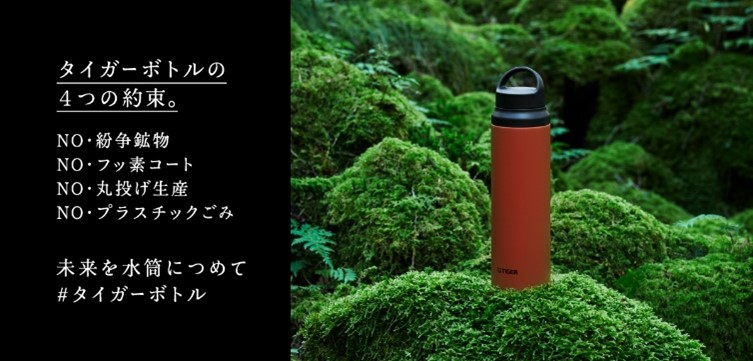
Reference | Information on recipes of dishes to reduce food loss
(1) Green smoothie with kiwi and salad spinach
URL of the recipe: https://www.tiger.jp/feature/recipe/post_329.htm
(Ingredients for 3 servings)
145 mL of water, 1 and 1/2 bananas (about 150 g), 1 bunch of salad spinach (about 70 g), 1 kiwi, and 1 and 1/2 mandarin oranges
* You can use milk in place of water.
How to make
- Peel the banana and slice it into 2 to 3 cm pieces.
- Cut off the roots of the salad spinach, wash with water, and then cut into about 2 cm lengths.
- Remove the calyces (end part) of the kiwi and cut into 2 to 3 cm square pieces with its skin.
- Peel the mandarin oranges and cut into 2 to 3 cm square pieces.
- Pour the water into the cup of the mixer (SKT-G100), add the banana, salad spinach, kiwi, and mandarin orange in the order mentioned, and mix in Powerful mode for about 2 minutes.
(2) Carrot cheesecake using whole carrot
URL of the recipe: https://www.tiger.jp/feature/recipe/post_264.html
(Ingredients to make a whole cake)
200 g of cream cheese, 1 carrot, 100 mL of milk, 50 g of granulated sugar, 50 g of soft flour, 1/4 of a teaspoon of baking powder, and 1 teaspoon of lemon juice
[Cake pan] 1 cake pan 18 cm in diameter/1 cooking sheet
How to make
- Bring the cream cheese back to room temperature and cut into 8 pieces.
- Wash the carrot clean, remove the stem end, and cut the carrot into about 1 cm round slices with its skin.
- Cover the carrot sliced in Step 2 in a paper towel moistened with water and then plastic wrap, heat in a microwave oven (for about 5 minutes 30 seconds at 600 W), and let it cool slightly.
- Preheat an oven to 170°C.
- Put the milk, granulated sugar, soft flour, baking powder, lemon juice, carrot, and cream cheese in the order mentioned into the cup of the mixer (SKT-G100) and mix in Comfort mode for about 2 minutes. *When the mixer used is SKS-R100, mix in LOW mode.
- Spread out the cooking sheet in the cake pan, pour in the mixture resulting from Step 4, and bake in the oven at 170°C for about 40 minutes.
- Let the baked cake cool slightly at room temperature and put it in a refrigerator to cool and make it hard.
- When the cake hardens, remove it from the pan, cut it into pieces, and put them on plates.
(3) Stir-fried pork with seasonal vegetables, seasoned with oyster sauce
(Ingredients for 3 servings)
180 g of pork, 240 g of Japanese radish, 60 g of red/yellow pepper (each), 30 g of green pepper, 60 g of king oyster mushroom, 10 g of long white leek, 6 cloud ear mushrooms, and 9 ginkgo nuts (canned)
[★] 1 teaspoon of soy sauce, 1 teaspoon of sake, 1/4 of a teaspoon of ginger, and 1/4 of a teaspoon of garlic
1 tablespoon of oil, 1 tablespoon of soy sauce, 1 tablespoon of oyster sauce, 1/4 of a tablespoon of sugar, and 1 teaspoon of sesame oil
How to make
- Cut the pork into 1 cm rectangular strips and season it with the seasonings shown with a star “★”.
- Cut the Japanese radish with its skin into 1 cm rectangular strips and douse with hot water.
- Remove the calyces (ends) of the red and yellow peppers and cut them with the seeds lengthwise into 1 cm strips.
- Cut the green pepper with its calyx (end) and seeds lengthwise into 1 cm strips.
- Cut the king oyster mushroom lengthwise into 8 equal parts.
- Rehydrate the cloud ear mushrooms and cut into bite-sized pieces.
- Cut the white leek diagonally into 1 cm pieces.
- Heat and grease a pan, put the strips of pork prepared in Step 1 in the pan, and stir-fry them.
- When cooked, add the ingredients prepared in Steps 2 to 7 and the ginkgo nuts, stir-fry them, put in the soy sauce, oyster sauce, and sugar, and mix and keep stir-frying.
- Add the sesame oil last and put in a serving dish.
(4) Szechuan-style spicy noodles with soup stock leavings
URL of the recipe: https://www.tiger.jp/feature/recipe/post_277.html
(Ingredients for 2 servings)
[Miso mixed with ground meat] 150 g of ground pork, 1 teaspoon of sweet flour paste, 2 teaspoons of soy sauce, 1 tablespoon of sake, 1/2 a long white leek (to be minced), and 1/2 a tablespoon of sesame oil
150 mL of soy milk, 1 tablespoon of soy sauce, 1 tablespoon of sweet sake, 1 tablespoon of ground sesame seeds, and 55 g of peanut butter
[Soup stock leavings (such as dried bonito, kelp, and dried small sardines left after being used to make soup stock)] 20 g of kelp/20 g of bonito
400 mL of chicken stock, 2 teaspoons of granulated Chinese soup stock, 2 servings of Chinese-style noodles, 1 bok choy, 1/4 of a long white leek (to be cut into fine strips), shredded red pepper (right amount), and hot sesame oil (right amount to taste)
How to make
- Mince 1/2 a long white leek and cut a 1/4 of a long white leek into fine strips.
- Cut the soup stock leavings into about 1 cm square pieces.
- Put the sesame oil into a frying pan, heat the pan, and stir-fry the ground pork in the heated pan. When the pork does not stick together, add the white leek minced in Step 1 and the sweet flour paste, soy sauce (2 teaspoons), and sake, coat the ingredients with the seasonings, and set them out.
- Put the soy milk, soy sauce (1 tablespoon), sweet sake, ground sesame seeds, peanut butter, and soup stock leavings in the cup of the mixer (SKT-G100) in the order mentioned, and mix in Powerful mode for about 4 minutes. *When the mixer used is SKS-R100, mix in HI mode.
- Put the chicken stock and granulated Chinese soup stock in a pan and boil.
- Boil water in another pan and boil the Chinese noodles and bok choy in it.
- Pour hot water into a dish in which the cooked food will be served to warm the dish.
- Put the mixture prepared in Step 4 in the dish warmed in Step 7, thin the mixture with the soup prepared in Step 5, add the Chinese noodles boiled in Step 6, and unravel them lightly.
- Put the pork prepared in Step 3 and the bok choy, fine strips of white leek, shredded red pepper on top of the noodles and add the hot sesame oil to taste.
(5) Pumpkin soup made from whole pumpkin including its seeds
URL of the recipe: https://www.tiger.jp/feature/recipe/post_268.html
(Ingredients for 3 servings)
250 g of pumpkin, 200 mL of water, 20 g of butter, 2 teaspoons of granulated chicken soup stock, 200 mL of milk, a nip of salt and pepper, fresh cream (right amount to taste)
How to make
- Cover the pumpkin in a paper towel moistened with water and then plastic wrap, and heat it in a microwave oven (at 600 W for about 4 minutes). Use the pumpkin with its skin after removing the calyx (end part) if the pumpkin has it.
- After heating, remove the plastic wrap and paper towel from the pumpkin, let the pumpkin cool slightly and cut it into 2 to 3 cm square pieces.
- Pour the water into the cup of the mixer (SKT-G100), add the pumpkin prepared in Step 2, and mix in Powerful mode for about 4 minutes.*When the mixer used is SKS-R100, mix in HI mode.
- Transfer the mixture prepared in Step 3 to a pan, add the butter, granulated chicken soup stock, and milk and put the pan over a heat source. After the soup boils, adjust the flavor with the salt and pepper.
- Transfer the soup to a serving dish and garnish it with the fresh cream.